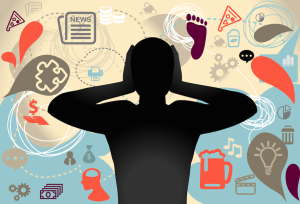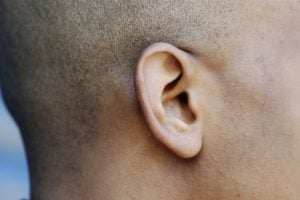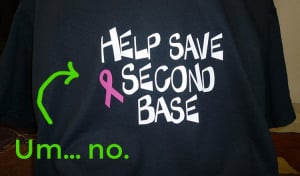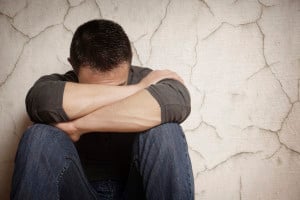I grew up most of my life forcing my queer body into the role of “man.”
I did it because “man” was what most people saw when they looked at me after a certain age. I was made to first shave my hair when I was five, and I have a sneaking suspicion that my parents’ assumption that my gender was being mistaken had something to do with that. But I never quite fit into that category of maleness.
I mostly fit. I knew I fit less into the role of “woman,” and I knew that “man” and “woman” were the only two things most people allowed themselves to see.
I knew I wanted to be seen, too, so I sucked it up as I bled when the softness of my queerness met the sharpness of maleness.
But once I felt myself bleeding out, I knew something needed to change. Instead of continuing to acquiesce to society’s demands to accept its way of gendering me, I committed to the tedious (and ongoing) process of trusting my own perception of myself.
I stopped giving a fuck about what most people saw and started paying attention to what I felt. And I felt that there was more than “man” and “woman.”
Even science agreed with me that two genders do not cover all the ways of existing. So I decided that I would exist in a different way, and that the world would deal.
But in the modern world, everything is gendered. Language. Desire. The self.
So when all that you think you know about gender is disproven, everything morphs right in front of your eyes. It’s truly a frighteningly beautiful experience, and it is thoroughly transformative.
I now know that my existence outside of the gender binary is undeniably true – but what I hadn’t considered was how, if this were true for me, it could be so many others’ truth as well – how this could be true for my lovers.
If I was using gender to determine who I wanted to fuck, and gender didn’t mean what I thought it meant, who did I want to fuck and why?
If Gender Isn’t What We’re Taught, What Does That Say About Gender-Based Sexualities?
Not long ago, I came to understand my sexuality was not above conscious influence.
My love for men as another man came not only from an innate sexual desire, but also a desire for a type of tenderness and affection that was denied to me and yet by which I felt compelled. Perhaps it compelled me because it was denied to me. And, so, on some level, I chose to seek it.
As someone who is still perceived as male, that desire remains at odds with society’s expectations. I still need it and it is still a part of me. But is it based solely on the gender of the people who are the object of my sexual desire, though, or something else?
Some of the “men” I had been with in the past could have later discovered (or accepted) they were not men (and did), that they were trans or non-binary or genderless.
Some were not men even when they were with me – even if I didn’t know it at the time. Even if they didn’t.
Though I thought I’d been with men, some proved to be women and non-men, just as I proved to be non-binary. Some will prove to be non-men later, and being with them fulfilled that same desire in me that I thought was based on their gender.
It’s true that I perceived them as male, but if my sexuality was based on my perceptions of gender, my perception has necessarily shifted as well. Knowing that I am seen by the world often as “man” but I am not, I can no longer justify perceiving “manhood” simply by noticing the things the world puts onto the male identity.
Accepting my non-binary gender identity changed the way I looked at everything I did that was based on gender. In redefining its limits for myself, I was forced to redefine genders limits for the world.
I’m not a “man,” and I’m not only sexually attracted to “men.”
So what am I?
Having a Queer Sexuality ‘For Men’
I long ago realized I wasn’t gay, even before understanding my place outside the gender binary. Though I know it isn’t the case for everyone who identifies using the term, “gay” comes with so much baggage for me as it relates to whiteness, masculinity, and sex that it fit me worse than “man.”
That baggage, along with the realization that my sexuality had not remained and does not remain static – that it is influenced – helped me discover that queerness fit better.
And exploring queerness is necessarily an exploration of gender.
I wrestled with the stability of gender, but still found myself stably drawn to what seemed like men. I once described my sexuality by saying “my queerness is for men,” and that had some truth to it. My being outside of it or not, the gender binary still exists. Others still exists within it. And most of the people I became sexually involved with were and are men.
But not all of them. And not all of them have to be. It isn’t their maleness that drew me to them. As I mentioned, I had sexual desires for people who turned out not to be men, but I also had sexual desires for folks I hadn’t even perceived as men in the first place.
I was aware of these desires even while convincing myself I didn’t want to be with these people based on the fact that they weren’t men, and I had told myself my queerness was only for men. However, if I had sexual desires for them, but did not want to be with them, it wasn’t only sexual desires that drew me to the type of intimacy that defined my queerness.
My queerness was more than sex. My sex was more than gender. I’m still trying to name what that “more” is. Somewhere along this journey, I learned to be okay with still trying.
My Queerness, Like My Gender, Is a Journey
Funny enough, it was exploring my sexuality that led me to a deeper understanding of the non-binary nature of my gender, but here I am again re-exploring my sexuality as a result of new understandings of my gender. How life cycles.
I feel as though I’m trying on new lenses to find the right prescription through which I can best view the world. I still see and feel gender, but I’m learning to allow it to unravel. I’m learning to allow people to define themselves the way I’d like to define myself.
I’m learning that not everyone who looks like a boy is a boy, not everything that feels like sex is intimacy, not everything that is intimate to me comes from what looks like boys.
I grew up most of my life forcing bodies into roles. I’m allowing myself to just be and go from there. Allowing others to be. And maybe our beings will line up.
Maybe I’ve been impeding fate based on this thing called gender that I don’t even know how to describe.
My queerness is a wandering that I’m still learning and probably will always be. What a person knows about themselves will necessarily change as one better understands their relationship to self, gender, sexuality, desirability, and intimacy. I should have never had to be afraid to let it.
[do_widget id=’text-101′]
Hari Ziyad is a Contributing Writer for Everyday Feminism and a Brooklyn-based storyteller. They are the Editor in Chief of RaceBaitR, a space dedicated to imagining and working toward a world outside of the white supremacist cisheteropatriarchal capitalistic gaze, and their work has been featured on Gawker, The Guardian, Out, Ebony, Mic, Colorlines, Paste Magazine, Black Girl Dangerous, Young Colored and Angry, The Feminist Wire, and The Each Other Project. They are also an assistant editor for Vinyl Poetry & Prose. You can find them (mostly) ignoring racists on Twitter @RaceBaitR and Facebook.
Search our 3000+ articles!
Read our articles about:
Our online racial justice training
Used by hundreds of universities, non-profits, and businesses.
Click to learn more





















